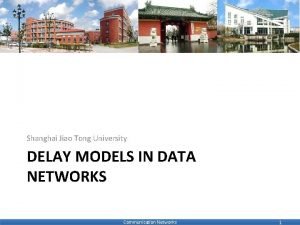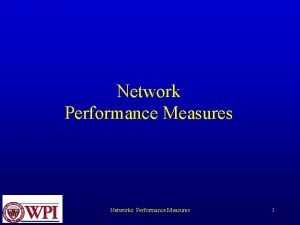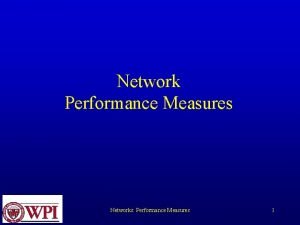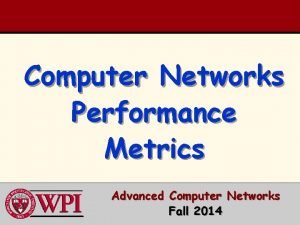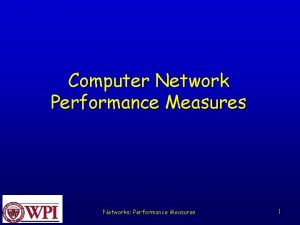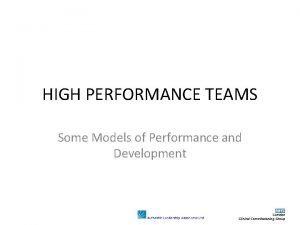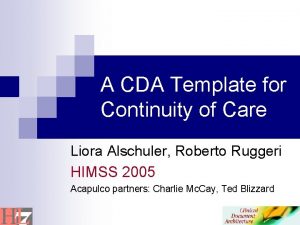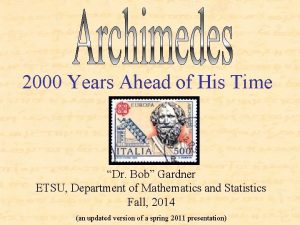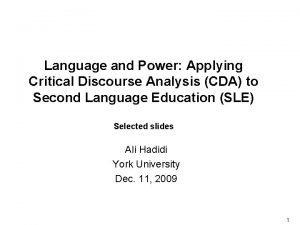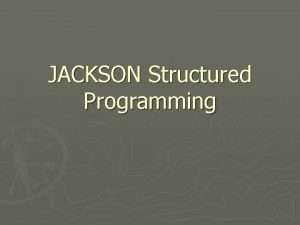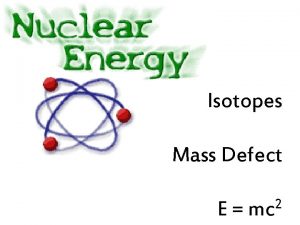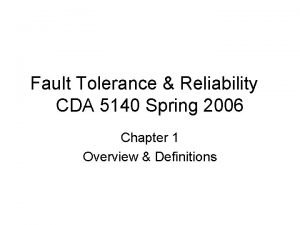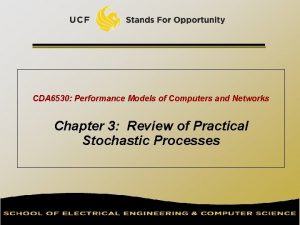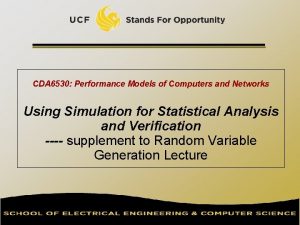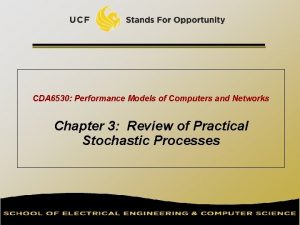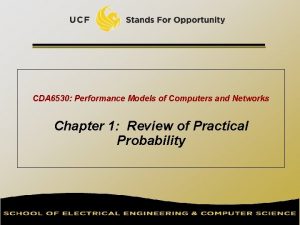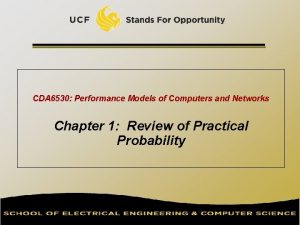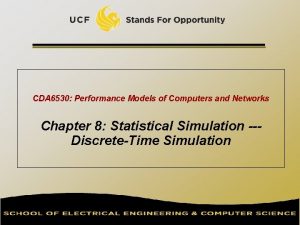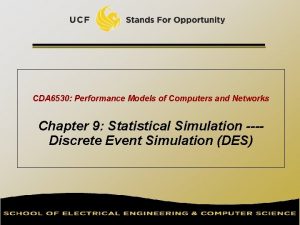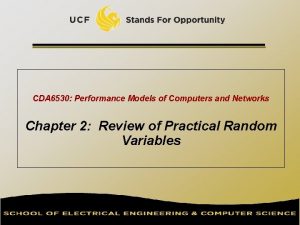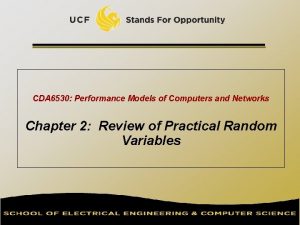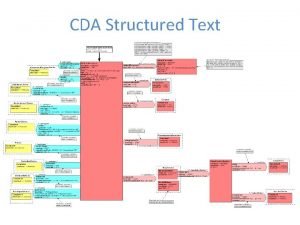CDA 6530 Performance Models of Computers and Networks







![Utilization Law for Single Server Queue X: service time, mean T=E[X] q Y: server Utilization Law for Single Server Queue X: service time, mean T=E[X] q Y: server](https://slidetodoc.com/presentation_image_h2/8fc4512664be02d6d453d0313c2e3bf4/image-8.jpg)








![Alternative Way for Sojourn Time Calculation q q We know that E[N] = ½/(1 Alternative Way for Sojourn Time Calculation q q We know that E[N] = ½/(1](https://slidetodoc.com/presentation_image_h2/8fc4512664be02d6d453d0313c2e3bf4/image-17.jpg)





![E[N] q If ¸ ¹: q If ¸=¹: 23 E[N] q If ¸ ¹: q If ¸=¹: 23](https://slidetodoc.com/presentation_image_h2/8fc4512664be02d6d453d0313c2e3bf4/image-23.jpg)








- Slides: 31

CDA 6530: Performance Models of Computers and Networks Chapter 6: Elementary Queuing Theory

Definition q Queuing system: q q a buffer (waiting room), service facility (one or more servers) a scheduling policy (first come first serve, etc. ) We are interested in what happens when a stream of customers (jobs) arrive to such a system q q throughput, sojourn (response) time, q q q Service time + waiting time number in system, server utilization, etc. 2

Terminology q A/B/c/K queue A - arrival process, interarrival time distr. q B - service time distribution q c - no. of servers q K - capacity of buffer q q Does not specify scheduling policy 3

Standard Values for A and B q q q M - exponential distribution (M is for Markovian) D - deterministic (constant) GI; G - general distribution M/M/1: most simple queue M/D/1: expo. arrival, constant service time M/G/1: expo. arrival, general distr. service time 4

Some Notations q q q Cn: custmer n, n=1, 2, an: arrival time of Cn dn: departure time of Cn ®(t): no. of arrivals by time t (t): no. of departure by time t N(t): no. in system by time t q N(t)=®(t)- (t) 5

®(t) q Average arrival rate (from t=0 to now): q ¸t = ®(t)/t 6

Little’s Law q q q (t): total time spent by all customers in system during interval (0, t) Tt: average time spent in system during (0, t) by customers arriving in (0, t) Tt = (t)/®(t) Nt: average no. of customers in system during (0, t) q q For a stable system, Nt= ¸t Tt q q Nt = (t)/t Remmeber ¸t = ®(t)/t For a long time and stable system N=¸T Regardless of distributions or scheduling policy 7
![Utilization Law for Single Server Queue X service time mean TEX q Y server Utilization Law for Single Server Queue X: service time, mean T=E[X] q Y: server](https://slidetodoc.com/presentation_image_h2/8fc4512664be02d6d453d0313c2e3bf4/image-8.jpg)
Utilization Law for Single Server Queue X: service time, mean T=E[X] q Y: server state, Y=1 busy, Y=0 idle q ½: server utilization, ½ = P(Y=1) q Little’s Law: N = ¸ E[X] q While: N = P(Y=1)¢ 1 + P(Y=0)¢ 0 = ½ q Thus Utilization Law: ½ = ¸ E[X] Q: What if the system includes the queue? q 8

Internet Queuing Delay Introduction q q How many packets in the queue? How long a packet takes to go through? 9

The M/M/1 Queue q An M/M/1 queue has q Poisson arrivals (with rate λ) q q q Exponential time between arrivals Exponential service times (with mean 1/μ, so μ is the “service rate”). One (1) server An infinite length buffer The M/M/1 queue is the most basic and important queuing model for network analysis 10

State Analysis of M/M/1 Queue q N : number of customers in the system (including queue + server) q Steady state q q q ¼n defined as ¼n=P(N=n) = / : Traffic rate (traffic intensity) State transition diagram 11

q q we can use ¼Q = 0 and ¼i = 1 We can also use balance equation 12

State Analysis of M/M/1 Queue q # of transitions = # of transitions ¼n are probabilities: : prob. the server is working (why is called “server utilization”) 13

State Analysis of M/M/1 Queue q N: avg. # of customers in the system 14

M/M/1 Waiting Time q q Xn: service time of n-th customer, Xn =st X where X is exponential rv Wn: waiting time of n-th customer q q q Not including the customer’s service time Tn: sojourned time Tn =Wn +Xn When ½ < 1, steady state solution exists and Xn, Wn, Tn X, W, T q q Q: E[W]? 15

State Analysis of M/M/1 Queue q W: waiting time for a new arrival : service time of i-th customer : remaining service time of the customer in service Exponential r. v. with mean 1/ due to memoryless property of expo. Distr. q T: sojourn (response) time 16
![Alternative Way for Sojourn Time Calculation q q We know that EN ½1 Alternative Way for Sojourn Time Calculation q q We know that E[N] = ½/(1](https://slidetodoc.com/presentation_image_h2/8fc4512664be02d6d453d0313c2e3bf4/image-17.jpg)
Alternative Way for Sojourn Time Calculation q q We know that E[N] = ½/(1 -½) We know arrival rate ¸ Then based on Little’s Law N=¸T E[T]=E[N]/¸ = 1/(¹-¸) 17

M/M/1 Queue Example q q q n n n A router’s outgoing bandwidth is 100 kbps Arrival packet’s number of bits has expo. distr. with mean number of 1 kbits Poisson arrival process: 80 packets/sec How many packets in router expected by a new arrival? What is the expected waiting time for a new arrival? What is the expected access delay (response time)? What is the prob. that the server is idle? What is P( N > 5 )? Suppose you can increase router bandwidth, what is the minimum bandwidth to support avg. access delay of 20 ms? 18

Sojourn Time Distribution q q T’s pdf is denoted as f. T(t), t¸ 0 T = X 1 + X 2 + +Xn + X Given there are N=n customers in the system q Then, T is sum of n+1 exponential distr. q q q T is (n+1)-order Erlang distr. When conditioned on n, the pdf of T (n+1 order Erlang) is denoted as f. T|N(t|n) 19

Sojourn Time Distribution q Remove condition N=n: q Remember P(N=n) = ¼n = (1 -½)½n Thus, T is exponential distr. with rate (¹-¸) 20

M/M/1/K Queue q q q Arrival: Poisson process with rate ¸ Service: exponential distr. with rate ¹ Finite capacity of K customers q q Customer arrives when queue is full is rejected Model as B-D process N(t): no. of customers at time t q State transition diagram q 21

Calculation of ¼ 0 q Balance equation: q ¼i=½¼i-1 = ½i¼ 0, i=1, , K q If ¸ ¹: q If ¸=¹: 22
![EN q If ¹ q If ¹ 23 E[N] q If ¸ ¹: q If ¸=¹: 23](https://slidetodoc.com/presentation_image_h2/8fc4512664be02d6d453d0313c2e3bf4/image-23.jpg)
E[N] q If ¸ ¹: q If ¸=¹: 23

Throughput q Throughput? When not idle = ¹ q When idle = 0 q Throughput = (1 -¼ 0)¹ +¼ 0¢ 0 q When not full q When full q q q = ¸ (arrive pass) = 0 (arrive drop) Prob. Buffer overflow = ¼K Throughput = (1 -¼K)¸ +¼K¢ 0 24

Sojourn Time q One way: T = X 1+X 2+ +Xn if there are n customers in (n·K) q q Doable, but complicated Another way: Little’s Law N=¸T q The ¸ means actual throughput q 25

M/M/c Queue q c identical servers to provide service Model as B-D process, N(t): no. of customers State transition diagram: q Balance equation: q q 26

q Solution to balance equation: q Prob. a customer has to wait (prob. of queuing) 27

M/M/1 Queue q Infinite server (delay server) q Each user gets its own server for service No waiting time q Balance equation: q why? 28

29

PASTA property q q q PASTA: Poisson Arrivals See Time Average Meaning: When a customer arrives, it finds the same situation in the queueing system as an outside observer looking at the system at an arbitrary point in time. N(t): system state at time t Poisson arrival process with rate ¸ M(t): system at time t given that an arrival occurs in the next moment in (t, t+ t) 30

q If not Poisson arrival, then not correct 31
 Virtual circuit network
Virtual circuit network Basestore iptv
Basestore iptv Modals and semi modals difference
Modals and semi modals difference Delay models in data networks
Delay models in data networks Network performance measurement in computer networks
Network performance measurement in computer networks Network performance measurement in computer networks
Network performance measurement in computer networks Router node
Router node Performance metrics in computer networks
Performance metrics in computer networks Router node
Router node Team performance models
Team performance models Ainsworth experiment
Ainsworth experiment Chapter 11 performance appraisal - (pdf)
Chapter 11 performance appraisal - (pdf) Disadvantages of bell curve in performance appraisal
Disadvantages of bell curve in performance appraisal Jcids process
Jcids process Repetititon
Repetititon Competency statement 1 cs i b
Competency statement 1 cs i b Mary shelley cda
Mary shelley cda Kate cda
Kate cda Pacific rim2 cda
Pacific rim2 cda Charlie chaplin cda
Charlie chaplin cda The mime cda
The mime cda Hardware 1990 cda
Hardware 1990 cda Continuity of care document template
Continuity of care document template Palimpsest cda
Palimpsest cda Reflective dialogue worksheet cda
Reflective dialogue worksheet cda Redeemer film cda
Redeemer film cda Depressionskriterier
Depressionskriterier Sa/sd methodology
Sa/sd methodology Schmidt 2002 cda
Schmidt 2002 cda Percy jackson 3 cda
Percy jackson 3 cda Binding energy chemistry
Binding energy chemistry Zero tolerance cda
Zero tolerance cda



